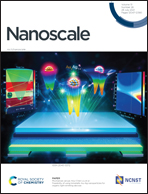Design of metal–organic framework composites in anti-cancer therapies
Abstract
Metal–organic frameworks are a class of new and promising anti-cancer materials. MOFs with adjustable pore size, large specific surface area, diverse structure, and excellent chemical and physical properties make them a class of effective protection carriers for anti-cancer substances. This review is centered on the core point of “anti-cancer” and discusses MOFs’ research progress in anti-cancer therapies. Firstly, we provided readers with the different types of MOFs, their preparation strategies and the resulting structures. Then, different MOF composites and their biological applications were systematically presented. The specificity of biomolecules endows MOFs with broader anti-cancer applications, while MOFs can protect the drugs and biomolecules to make the best of a challenging situation. Finally, we elucidated a comprehensive overview of the biological applications of MOFs, including research hotspots as drug delivery and biomolecule carriers. Besides, we looked forward to the future developments of MOFs in the field of anti-cancer therapies. As a class of novel materials, the anti-cancer applications of MOFs are extended through the combination of different materials and different methods to improve their efficacy.

- This article is part of the themed collection: Recent Review Articles


 Please wait while we load your content...
Please wait while we load your content...